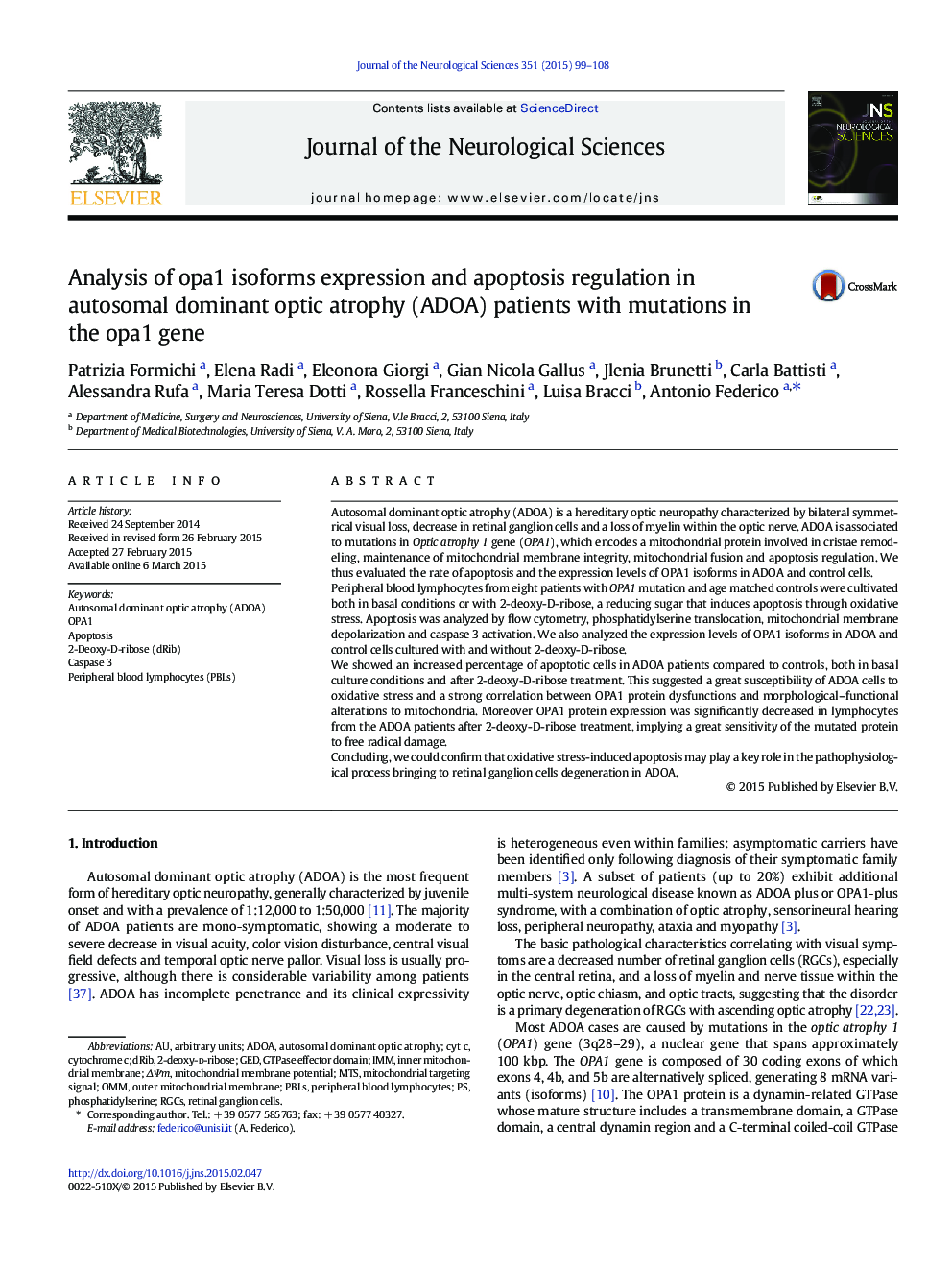| کد مقاله | کد نشریه | سال انتشار | مقاله انگلیسی | نسخه تمام متن |
|---|---|---|---|---|
| 1913258 | 1535111 | 2015 | 10 صفحه PDF | دانلود رایگان |

• Apoptosis was analyzed in lymphocytes from ADOA patients.
• We showed an increased percentage of apoptosis in ADOA patients compared to controls.
• We suggested a great susceptibility of ADOA cells to oxidative stress.
• We suggested a correlation between OPA1 protein dysfunctions and alterations to mitochondria.
• Mutated OPA1 protein has a great sensitivity to free radical damage.
Autosomal dominant optic atrophy (ADOA) is a hereditary optic neuropathy characterized by bilateral symmetrical visual loss, decrease in retinal ganglion cells and a loss of myelin within the optic nerve. ADOA is associated to mutations in Optic atrophy 1 gene (OPA1), which encodes a mitochondrial protein involved in cristae remodeling, maintenance of mitochondrial membrane integrity, mitochondrial fusion and apoptosis regulation. We thus evaluated the rate of apoptosis and the expression levels of OPA1 isoforms in ADOA and control cells.Peripheral blood lymphocytes from eight patients with OPA1 mutation and age matched controls were cultivated both in basal conditions or with 2-deoxy-D-ribose, a reducing sugar that induces apoptosis through oxidative stress. Apoptosis was analyzed by flow cytometry, phosphatidylserine translocation, mitochondrial membrane depolarization and caspase 3 activation. We also analyzed the expression levels of OPA1 isoforms in ADOA and control cells cultured with and without 2-deoxy-D-ribose.We showed an increased percentage of apoptotic cells in ADOA patients compared to controls, both in basal culture conditions and after 2-deoxy-D-ribose treatment. This suggested a great susceptibility of ADOA cells to oxidative stress and a strong correlation between OPA1 protein dysfunctions and morphological–functional alterations to mitochondria. Moreover OPA1 protein expression was significantly decreased in lymphocytes from the ADOA patients after 2-deoxy-D-ribose treatment, implying a great sensitivity of the mutated protein to free radical damage.Concluding, we could confirm that oxidative stress-induced apoptosis may play a key role in the pathophysiological process bringing to retinal ganglion cells degeneration in ADOA.
Journal: Journal of the Neurological Sciences - Volume 351, Issues 1–2, 15 April 2015, Pages 99–108